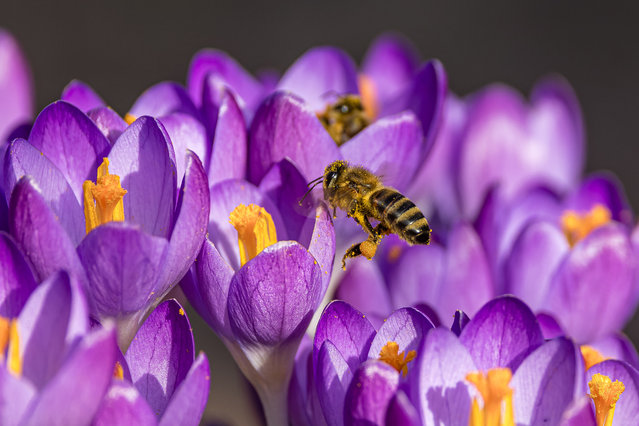
A honeybee flies to a spring crocus to collect nectar in mild weather, Brandenburg, Germany on February 18, 2024. (Photo by Frank Hammerschmidt/dpa)
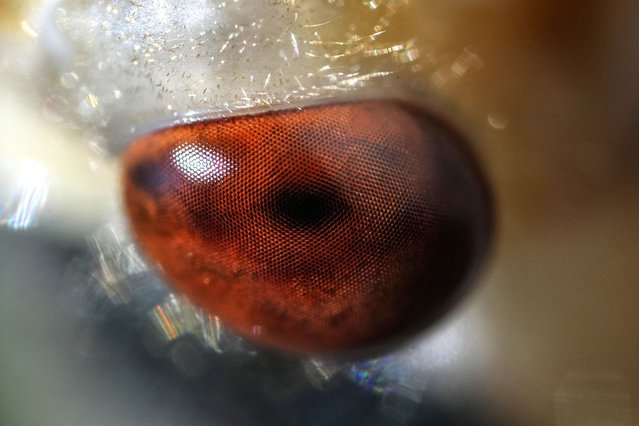
A close-up of an adult periodical cicada's compound eye, shortly after it shed its nymphal shell, is visible on Saturday, May 18, 2024, in Charleston, Ill. (Photo by Carolyn Kaster/AP Photo)
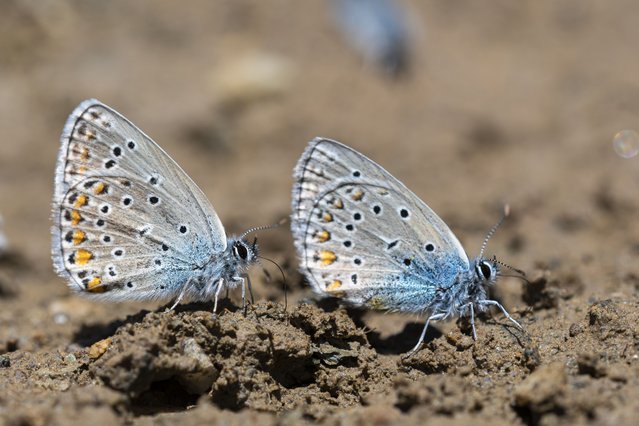
“Rose's polyommatus”are pictured at Lake Van Basin on June 23, 2024 in Van, Turkiye. The Lake Van Basin, home to many creatures with its climate, rich flora, high altitude and unique nature, harbors hundreds of butterfly species. The basin, which hosts the highest number of butterfly species in Europe and offers habitat to 220 of the 400 butterfly species identified in Turkiye, also draws attention with its endemic species that are in danger of extinction. “Rose's polyommatus”, which is known to live only in Van, is also among the butterfly species that attract attention. (Photo by Ali Ihsan Ozturk/Anadolu via Getty Images)
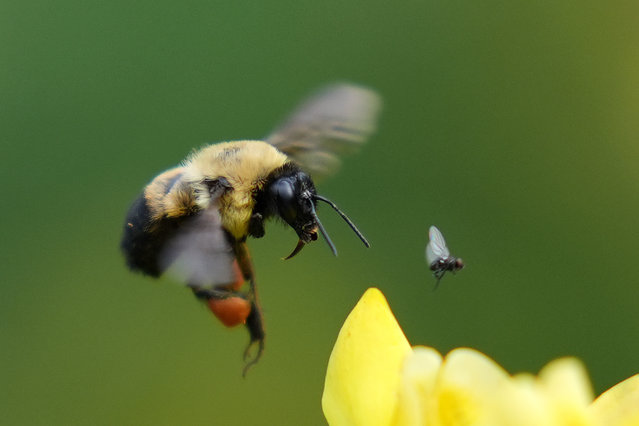
A bumblebee collects pollen from a flower at Toronto's Music Garden in Ontario, Toronto, Canada on June 20, 2024. (Photo by Mert Alper Dervis/Anadolu via Getty Images)
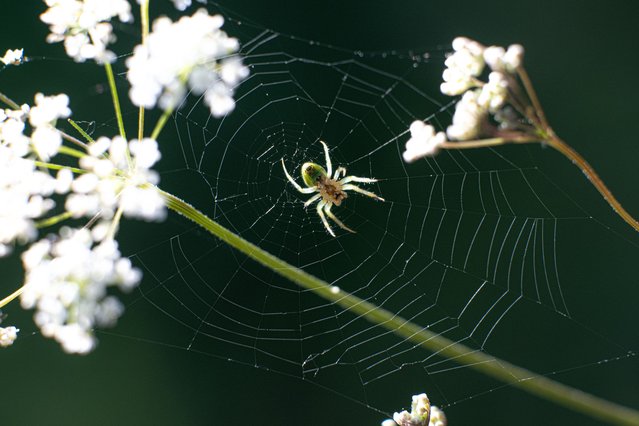
A view of cucumber green spider (Araniella cucurbitina) at Alucdagi Nature Park located in Camlidere district of Ankara, Turkiye on June 23, 2024. (Photo by Harun Ozalp/Anadolu via Getty Images)
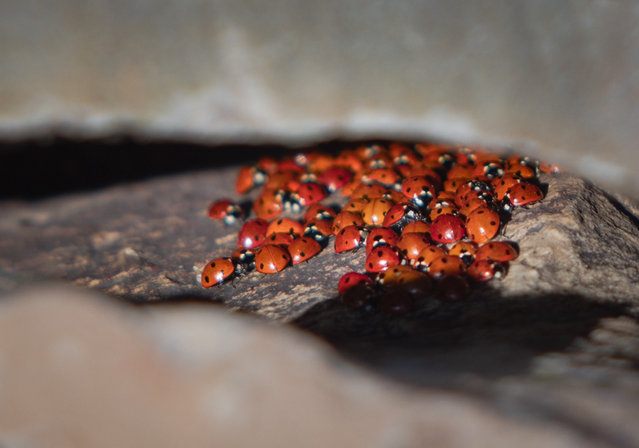
Ladybugs that live in colonies are seen at the Uludaz Hill with an altitude of 2 thousand 260 meters in Kahramanmaras, Turkiye on June 13, 2024. Uludaz Hill, where ladybugs live in colonies and attract attention with their colors and density, migrate, attracts the attention of visitors who come to the region for nature tourism. (Photo by Ahmet Aslan/Anadolu via Getty Images)
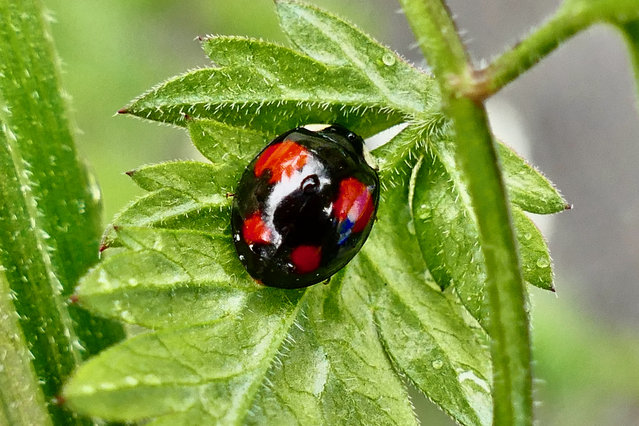
A harlequin ladybird (Harmonia axyridis) crawls along a leaf in the rain in Emmer Green, Berkshire, UK on April 28, 2024. (Photo by Geoffrey Swaine/Rex Features/Shutterstock)
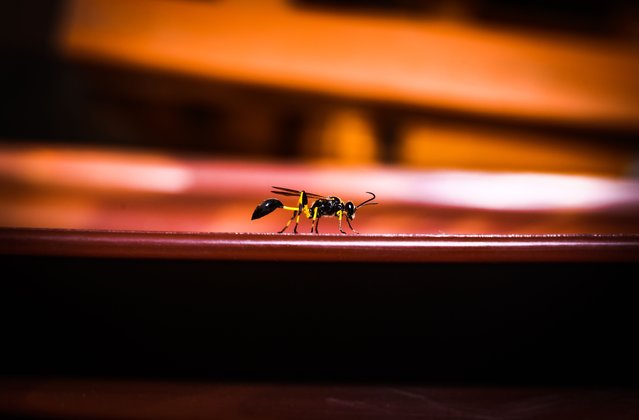
A black mud-dauber wasp in West Bengal, India on June 24, 2024. These insects capture spiders and paralyse them, then drag them back to their mud nests as food for their larvae. (Photo by Soumyabrata Roy/NurPhoto via Getty Images)
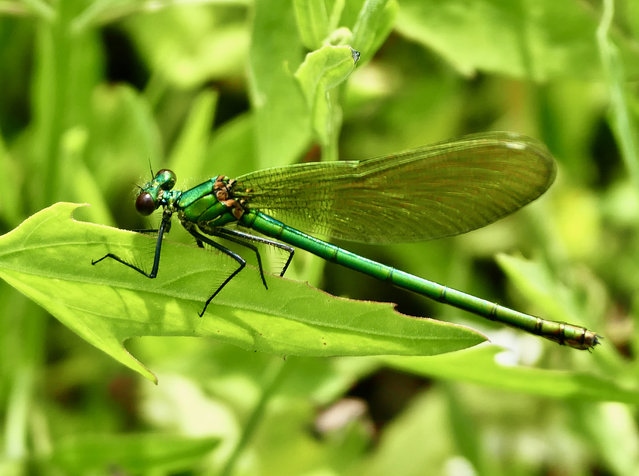
A damselfly rests on a leaf by the Thames in the UK on June 24, 2024. (Photo by Geoffrey Swaine/Rex Features/Shutterstock)
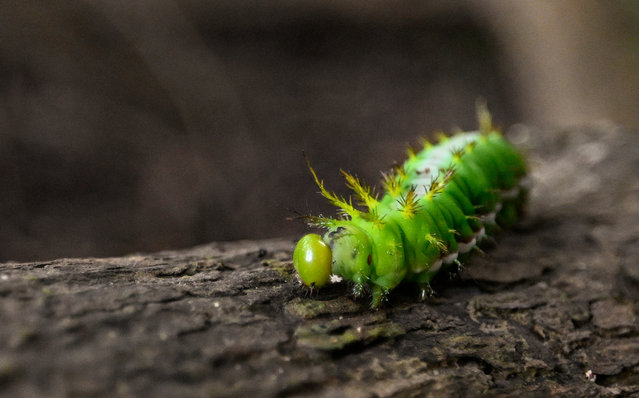
A caterpillar walks on a tree in the protected Amazon rainforest of Cuyabeno, Ecuador, on March 28, 2024. The smell of rotting fish fills part of the trail where a team of biologists and park rangers has hung 32 green traps that blend into the thick of the forest in the Cuyabeno Wildlife Production Reserve. Since August, they have been developing a butterfly monitoring project to measure the effects of climate change with the support of the American NGO Rainforest Partnership. (Photo by Daniel Munoz/AFP Photo)
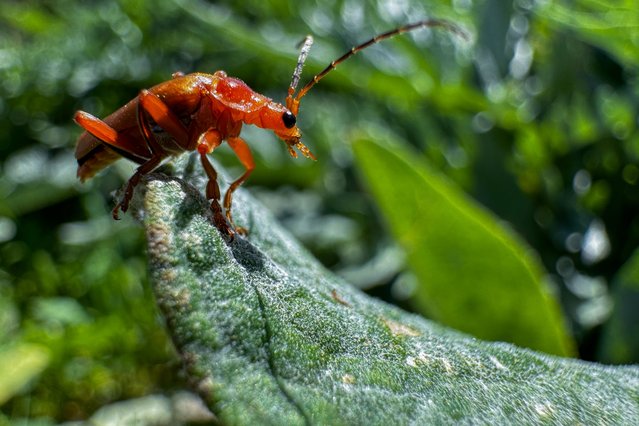
A common red soldier beetle (Rhagonycha fulva), a species of soldier beetle, is seenin Izmir, Turkiye on April 18, 2024. The common red soldier beetle, which lives in Anatolia and Europe and was introduced to North America, is 8-10 millimetres long. Adults feed on aphids, and also eat pollen and nectar. (Photo by Lokman Ilhan/Anadolu via Getty Images)
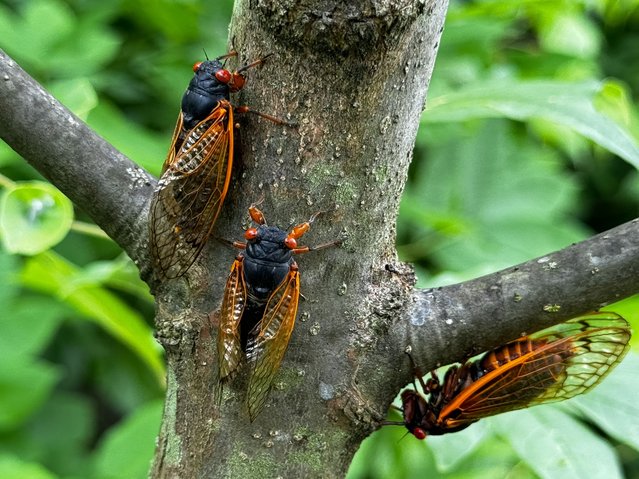
Cicadas from brood XIX are seen on a tree in Angelville, Georgia on May 23, 2024. They're loud. They're sexually aroused. And for one special, cacophonous month up to a trillion of them will engulf suburbs and woodlands across America. Two cicada “broods” are set for a rare double emergence that last occurred in 1803, when Thomas Jefferson was president and the United States purchased Louisiana from France. This year's event involves the 13-year Brood XIX, currently emerging in the Carolinas, followed by the 17-year Brood XIII in the Midwest. There could be a small area of overlap in central Illinois. (Photo by Elijah Nouvelage/AFP Photo)
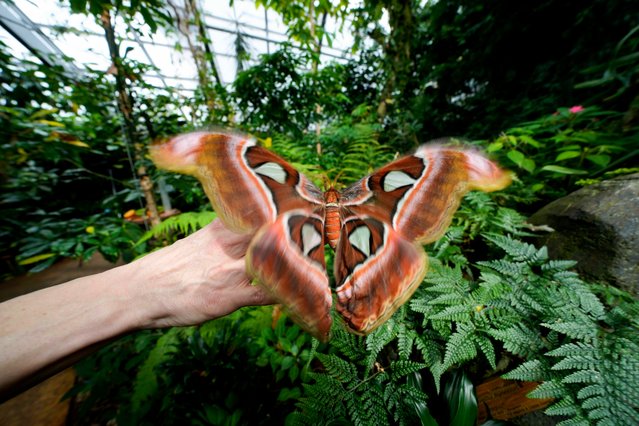
Ornithologist Francesca Rossi holds a newborn female Attacus lorquinii at the greenhouse of the of the Museo delle Scienze (MUSE), a science museum in Trento, Italy, Monday, May 6, 2024. The Butterfly Forest was created to bring public awareness to some of the research that MUSE is doing in Udzungwa Mountains to study and protect the world’s biodiversity against threats such as deforestation and climate change. (Photo by Luca Bruno/AP Photo)
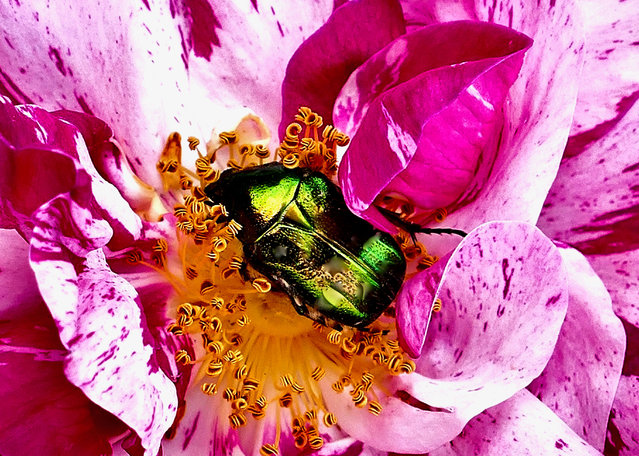
A rose chafer in Oxfordshire, UK on July 8, 2024. The beetles are often seen on flowers in the garden and are sometimes maligned for munching their way through these plants. However, they are an important detritivore as they feed on dead and decaying matter and recycle its nutrients, which makes a helpful addition to any compost. (Photo by Geoffrey Swaine/Rex Features/Shutterstock)
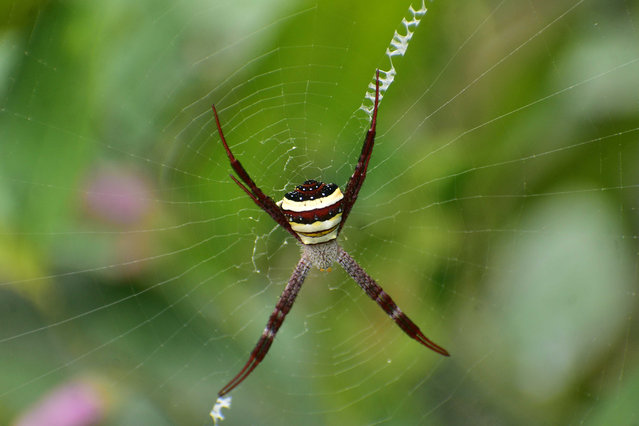
A St. Andrews cross spider is hanging on its web in Nagaon District, Assam, India, on February 25, 2024. Not only do their bodies form the diagonal cross that gives them their name, but they also weave a white X into their webs with extra silk. This one has just begun to do so, as you can see at the top right and bottom left. (Photo by Anuwar Hazarika/NurPhoto/Rex Features/Shutterstock)
21 Jul 2024 05:04:00,
post received
0 comments
